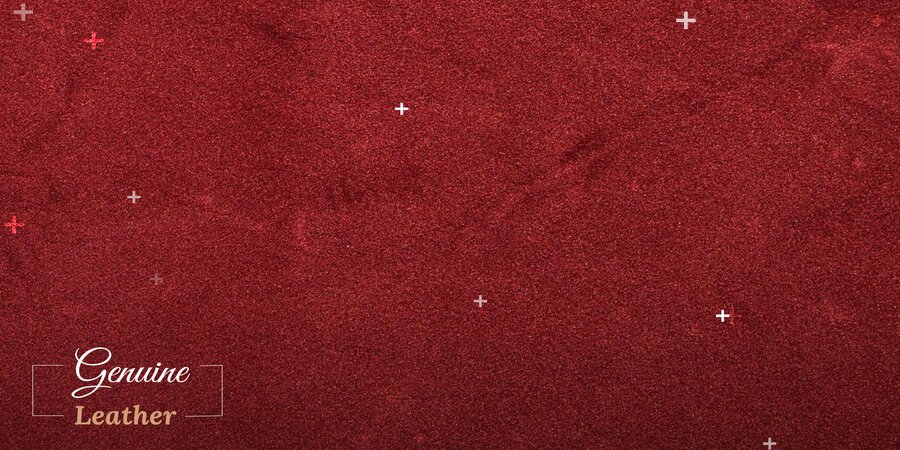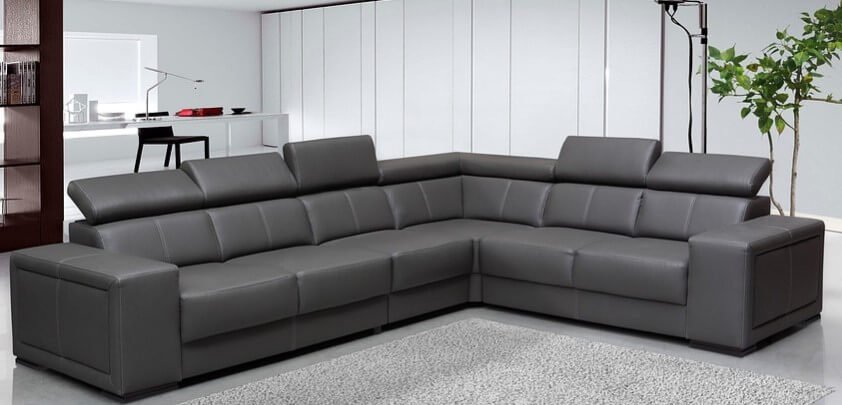Navigate the World of Genuine Leather Like a Pro
You should not jump on top of the cloud seeing or hearing about genuine leather goods. A leather buyer inevitably identifies marks as ‘genuine leather’, ‘top grain leather’ or ‘full grain leather’ on the underside of the products. It denotes leather standard but is not exclusively restricted to what one might have imagined solely from the words.
The store or shop might present some awesome product choices such as briefcases, belts or shoes as you are strolling past them dreaming. Should you jump on to the first one that says genuine leather on it? We are going to divulge all the issues attached to it right here. Bear with us because we are going deep into what genuine leather is.
What is genuine leather?
Genuine leather, in short, refers to a product that contains some leather materials in it.
But the name or title is not, in any way, equivalent to authentic quality and fullness of quantity at all. This grade simply means the existence of some authentic yet inferior quality animal oriented leather in the item.
However, the quantity of leather is specified on the label and the percentage could be either full or partial in reality.
Consequently, many experts point out that the finest bicast, split and bonded leather products can technically be called genuine leather as well because of their striking similarity in application or usefulness.
As the connotation and the denotation go quite the opposite directions, a newbie may experience a heartwarming feeling, seeing ‘genuine leather’ inscribed on the goods.
But in terms of look and durability, it cannot compete with full grain or top grain leather. Yes, genuine leather is real leather, okay, mostly.
But rest assured about their belonging to the lowest category of leather. To speak frankly, it scores poorly against almost all of its counterparts.
Where does genuine leather come from?
Regardless of its source animal, genuine leather comes from leftover hides.
Usually, the most useful section of the hide goes for the costliest and premium products.
Similar to full grain counterpart, genuine leather is also collected from cattle, buffalo, calves, lambs, pigs, goats, sheep and some other wild animals such as zebras, bisons, alligators, elephants, crocodiles, lizards, snakes, ostriches and kangaroos.
Especially, cowhide, sheepskin and deerskin offer greater strength with a softer as well as lighter touch. However, cowhide is the most common among all because of its essential availability as well as thickness.
How is genuine leather produced?
Genuine leather lies in between top grain and suede leather. In many instances, genuine leather is, in fact, split leather. The exterior segment or top grain is the most expensive, thanks to its fibrous character.
Contrarily, the lower section or suede is used for comparatively cheaper products.
Stripping off those two other layers, you get genuine leather from the middle part. It is more indicative of the position of the hide than quality.
As a result of this splitting nature of production, genuine leather may also be termed as split leather. So the thickness of the skin matters a lot.
Manufacturers usually apply an artificial layer to the surface of split leather and emboss it with a leather grain which is then called bicast leather. Split leather is also used to create suede.
Should genuine leather be expensive?
Let it sink in, real leather always costs big bucks no matter what. Genuine leather goods will certainly dent your wallet’s health as it is real leather. The expenses depend on several issues which are laid out here in detail.
- Leather grade: The thing is that you do not need to spend as much for them as for a top grain product. But obviously you must pay more than that of affordable faux leather or semi leather items.
- Exotic hide: Then we should consider the animal hide we are sourcing the leather from. An exotic animal such as ostrich essentially costs big bucks regardless of its being genuine leather. On the other hand, goat and buffalo hide could usually cost less.
- Dyeing: fully dyed products naturally demand big prices than that of semi dyed items. White colored leather goods also command an eye rolling price. Machine spraying goes way cheaper compared to manual dyeing.
- Tanning: Vegetable tanning costs both more money as well as time than chrome tanning because of its natural and methodical process. Vegetable tan relies on green method and is totally safe for skin and the environment.
- Handmade: Leather products produced en masse in machines go cheaper. On the opposite, handcrafted goods ask for good prices. Think about a craftsman gaining years of experience in leathercraft and putting all his knowledge into the production of an item for days or even weeks.
- Geographical location of production: Normally, a leather product may be sold cheaper if it is manufactured in a labor intensive country in comparison to an industrially advanced nation.
So we can see that genuine leather does not automatically mean watered down prices. Rather, it depends on a number of inalienable factors related to its production.
Is genuine leather waterproof?
Real leather is barely waterproof because of its incredibly porous features. So never pin your hope too much on it unless the manufacturing process brings in a lot of artificial components into the mix. Its permeable nature does not allow complete waterproofness. But there are certain waterproofing methods you can apply in this regard.
Does genuine leather last long?
Genuine leather lasts at least for five years and long enough for you to make a good use of your money. But one should not raise too much hope about it. Depending on your care along with daily wear and tear, it may even go for 10-20 years. However, this is rather a rare scenario for just anyone. In general, you may expect it to serve you for five years in the best shape.
How to identify genuine leather?
There are several marks to identify genuine leather products. Let’s check them out.
- Genuine leather has one of a kind pattern which is not uniform at all. Fake leather introduces same sized small spots all over the exterior.
- Rough underside of leather always indicates its authenticity.
- Real leather is heavier than its fake counterpart.
- You can certainly distinguish between real leather smell from artificial chemical smells.
- Real leather absorbs water and therefore changes color into dark shades. Diversely, artificial leather shows no sign of color distortion even if it is plunged into water.
Genuine leather products:
There are a bunch of leather products coming from genuine leather including coats, jackets, handbags and gloves. Its softness grows as the years roll by. Besides, we may mention backpacks, belts, wallets, camera gear, watchbands, notebooks, footwear and sundry items.
How to take care of genuine leather?
Our experts have laid out a few tricks and techniques to keep at your disposal on leather care. You can overcome most of the issues with these leather hacks.
- Vacuum and dust occasionally with a clean and dry cloth. If leather is excessively dirty, you may wipe it using a soft, damp cloth with a lather of any mild soap plus lukewarm water. Never opt for spot clean leather but clean the entire surface. Wipe clean with a damp cloth and dry with a clean, soft cloth.
- Wipe extra liquid instantly with a clean cloth or sponge. Let the leather air dry.
- Apply a mild hand soap with a clean and wet sponge. Rinse well and let air dry.
- In case of butter, oil, or grease incident, wipe the leather with a clean, dry cloth and let the remainder of the oil dissipate into the leather. Do not apply water or try to wash a grease spot.
- There are a number of inhibitions as well in this respect. Do not use cleaning solvents, saddle soap, furniture polishes, varnishes, oils, abrasive cleaners, detergents, or ammonia on leather. They might permanently ruin the finish, causing a sticky or cracked surface.
Conclusion:
Going through this writeup, you should have noticed that genuine leather is a tricky term with an obscure meaning playing underneath.
You have got a clear notion on its production method as well as the components of genuine leather.
A lot of leather products come from this grade despite its glaring deficiency in qualitative terms such as durability, quantity and appearance. You are now fully equipped with a bunch of highly effective techniques regarding how to uncover the leather originality of your choicest product.
Technically, all leather can be termed as genuine if it contains a little of real leather.
So, an alarm should ring inside your head whenever you are confronted with this term. Always remember that the first-rated top grain or full grain leather manufacturer or seller never uses ‘genuine leather’ on the goods because of its essentially compromised standard.
They carefully steer clear of it and you should be no exception to those experts as well. You may still purchase a genuine leather item but keep your guard up while you are doing so.
We can confidently say that you are not to be toyed around in the leather stores anymore.





